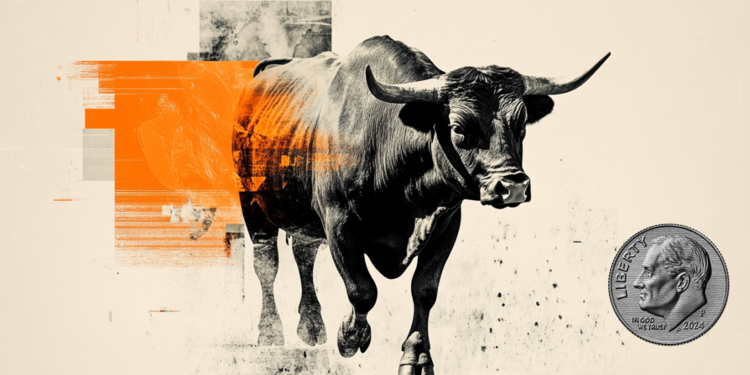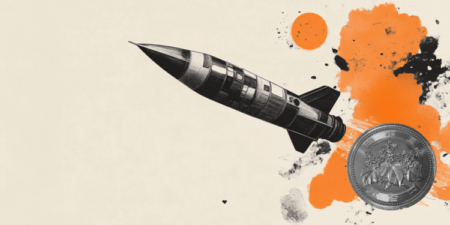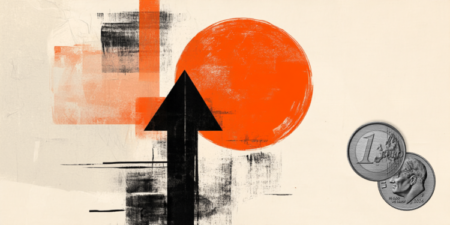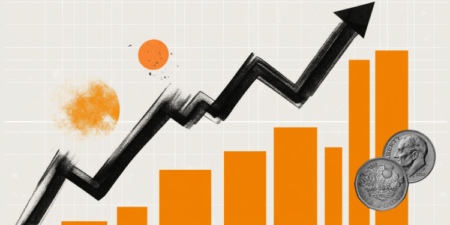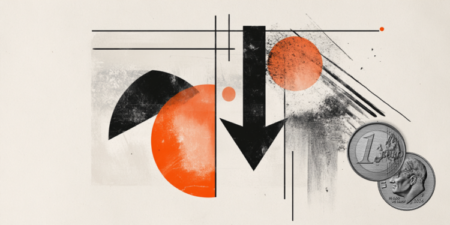- The Indian Rupee loses ground in Thursday’s Asian session.
- Firmer US Dollar and outflows from Indian equities weigh on the INR.
- Investors will closely watch the Indian PM Modi’s meeting with Trump administration officials and the US PPI data.
The Indian Rupee (INR) weakens on Thursday, pressured by the renewed US Dollar (USD) demand. Additionally, the maturity of positions in the non-deliverable forwards (NDF) segment and equity sales by overseas investors could drag the INR lower.
On the other hand, strong intervention from the Reserve Bank of India (RBI) might help limit the local currency’s losses. The fall in crude oil prices after US President Donald Trump called Russian President Vladimir Putin and Ukrainian President Volodymyr Zelenskiy to discuss ending the war in Ukraine might provide some support to the INR as India is the world’s third-largest consumer of crude oil.
India’s Prime Minister Narendra Modi is scheduled to talk with multiple Trump administration officials during his trip to Washington, D.C., including Elon Musk, who leads Trump’s so-called Department of Government Efficiency.
Government officials said that Modi’s meeting with Musk is anticipated to include a discussion of Musk’s private business ventures, such as the growth of Starlink and Tesla in India. On the US docket, the weekly Initial Jobless Claims and Producer Price Index (PPI) will be released later on Thursday.
Indian Rupee remains weak amid multiple challenges
- According to Reuters, citing government officials, Modi is prepared to cut India’s tariffs in multiple sectors ahead of his meeting with Trump in order to prevent a potential trade war with the United States.
- India’s retail inflation, measured by the Consumer Price Index (CPI) stood at 4.31% in January from 5.22% in December, the Ministry of Statistics & Programme Implementation showed on Monday. This reading came in softer than the market consensus of 4.6%.
- The US CPI rose 3.0% year-on-year in January versus 2.9% prior, according to the US Bureau of Labor Statistics on Wednesday. This reading came in hotter than the 2.9% expected.
- The so-called core CPI, which excludes food and energy costs, climbed 3.3% in January, compared to the previous reading of 3.2% and the estimation of 3.1%.
- On a monthly basis, the headline CPI inflation jumped to 0.5% in January from 0.4% in December, while the core CPI increased to 0.4% in January from 0.2% recorded in December.
- Traders expected just one quarter-point rate cut this year, down from two reductions before the CPI report.
- Fed Chair Jerome Powell said the recent inflation data showed that while the central bank has made substantial progress toward taming inflation, there is still more work to do.
USD/INR forms a shooting star candlestick, downward pressure expected in the near term
The Indian Rupee edges lower on the day. Technically, the constructive outlook of the USD/INR pair remains intact, with the price holding above the key 100-day Exponential Moving Average (EMA) on the daily timeframe. The path of least resistance is to the upside as the 14-day Relative Strength Index (RSI) stands above the midline near 56.00.
The 87.00 psychological level acts as the first upside barrier for USD/INR. A decisive break above this level could see a rally to an all-time high near 88.00. Extended gains could pave the way to 88.50.
On the other hand, the first downside target to watch is 86.35, the low of February. Bearish candlesticks below the mentioned level could push USD/INR back down toward 86.14, the low of January 27.
Indian Rupee FAQs
The Indian Rupee (INR) is one of the most sensitive currencies to external factors. The price of Crude Oil (the country is highly dependent on imported Oil), the value of the US Dollar – most trade is conducted in USD – and the level of foreign investment, are all influential. Direct intervention by the Reserve Bank of India (RBI) in FX markets to keep the exchange rate stable, as well as the level of interest rates set by the RBI, are further major influencing factors on the Rupee.
The Reserve Bank of India (RBI) actively intervenes in forex markets to maintain a stable exchange rate, to help facilitate trade. In addition, the RBI tries to maintain the inflation rate at its 4% target by adjusting interest rates. Higher interest rates usually strengthen the Rupee. This is due to the role of the ‘carry trade’ in which investors borrow in countries with lower interest rates so as to place their money in countries’ offering relatively higher interest rates and profit from the difference.
Macroeconomic factors that influence the value of the Rupee include inflation, interest rates, the economic growth rate (GDP), the balance of trade, and inflows from foreign investment. A higher growth rate can lead to more overseas investment, pushing up demand for the Rupee. A less negative balance of trade will eventually lead to a stronger Rupee. Higher interest rates, especially real rates (interest rates less inflation) are also positive for the Rupee. A risk-on environment can lead to greater inflows of Foreign Direct and Indirect Investment (FDI and FII), which also benefit the Rupee.
Higher inflation, particularly, if it is comparatively higher than India’s peers, is generally negative for the currency as it reflects devaluation through oversupply. Inflation also increases the cost of exports, leading to more Rupees being sold to purchase foreign imports, which is Rupee-negative. At the same time, higher inflation usually leads to the Reserve Bank of India (RBI) raising interest rates and this can be positive for the Rupee, due to increased demand from international investors. The opposite effect is true of lower inflation.
Read the full article here







